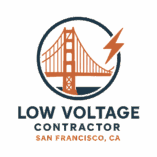Low Voltage Solutions for San Francisco High-Rises and Multi-Tenant Buildings
Introduction
High-rise and multi-tenant buildings in San Francisco demand advanced low voltage solutions to support robust communication, security, and automation systems. Low voltage contractors in San Francisco provide the expertise to design, install, and maintain these systems, ensuring that high-density properties operate efficiently and securely. This guide explores the essential low voltage services, benefits, and considerations for property owners and managers in San Francisco.
Table of Contents
- Understanding Low Voltage Systems
- The Importance of Low Voltage Solutions in High-Rises
- Networking and Structured Cabling
- Security and Access Control Systems
- Audio/Visual Integration for Multi-Tenant Spaces
- Smart Building Automation
- Energy Efficiency and Sustainability
- Common Challenges and Mistakes
- Future Trends in Low Voltage Technology
- Conclusion
- FAQs
Understanding Low Voltage Systems
Low voltage systems operate at 50 volts or less and are responsible for data, communication, and control functions. Unlike high voltage electrical systems, they do not power heavy machinery or lighting but are critical for modern infrastructure, including:
- Internet and network connectivity
- IP security cameras and alarm systems
- Audio/visual systems
- IoT and smart building devices
Proper planning and installation are essential to prevent disruptions and ensure the scalability of these systems in high-density buildings.
The Importance of Low Voltage Solutions in High-Rises
High-rise and multi-tenant buildings present unique challenges:
- Multiple floors with high device density
- Diverse tenant needs for connectivity and security
- Complex fire and life safety integration
- Regulatory compliance requirements
Low voltage contractors ensure that systems are designed to handle heavy traffic, maintain security, and meet San Francisco building codes. According to the Building Owners and Managers Association (BOMA) properly implemented low voltage infrastructure improves tenant satisfaction and operational efficiency.
Networking and Structured Cabling
Reliable network infrastructure is the foundation of modern high-rises. Low voltage contractors implement:
- Structured cabling systems: Cat6a, Cat7, and fiber optic for high-speed connectivity
- Network redundancy: Preventing downtime for tenants
- Centralized patch panels and switches: Simplifying maintenance
- Wireless access points: Ensuring seamless Wi-Fi coverage throughout the building
These solutions allow tenants and property managers to access secure and fast network connections across multiple floors and units.
Security and Access Control Systems
Security is a critical concern in multi-tenant buildings. Low voltage contractors provide:
- IP surveillance systems: High-definition cameras and video management
- Access control solutions: Keycards, biometric scanners, and mobile credentials
- Intrusion detection and alarm systems: Integrated with emergency response
- Tenant-specific access management: Ensuring privacy and safety
Professional installation ensures compliance with California security regulations and reduces potential liability risks.
Audio/Visual Integration for Multi-Tenant Spaces
Audio and video systems enhance tenant communication, collaboration, and amenities:
- Conference room AV systems with video conferencing and display integration
- Digital signage in lobbies and common areas
- Multi-zone audio systems for shared facilities
- Integration with network infrastructure for centralized management
These systems improve tenant experience and building functionality while supporting modern business operations.
Smart Building Automation
Automation technologies enable intelligent control of building operations:
- HVAC and lighting automation for energy efficiency
- Occupancy sensors to optimize resource usage
- IoT device integration for predictive maintenance
- Centralized control dashboards for property managers
Smart automation reduces operating costs, enhances sustainability, and improves tenant comfort.
Energy Efficiency and Sustainability
San Francisco buildings increasingly adopt energy-efficient low voltage solutions:
- Automated systems reduce unnecessary energy consumption
- Integration with renewable energy sources and battery storage
- Data analytics identify efficiency opportunities
- Compliance with LEED and other sustainability standards
Buildings with smart low voltage systems can reduce energy usage significantly, lowering operating costs and environmental impact.
Common Challenges and Mistakes
Property owners and managers often face challenges including:
- Insufficient network capacity planning – Leading to slow connections
- DIY installations – Resulting in unreliable performance
- Neglecting security integration – Increasing vulnerability to breaches
- Failure to plan for future upgrades – Limiting scalability
Hiring professional low voltage contractors mitigates these risks and ensures reliable, scalable, and compliant systems.
Future Trends in Low Voltage Technology
- IoT proliferation: More sensors and devices integrated into building systems
- AI-driven automation: Predictive energy management and maintenance
- Cloud-based monitoring: Centralized dashboards for multi-building management
- Enhanced cybersecurity: Protecting sensitive tenant and building data
- Green building initiatives: Continued emphasis on sustainability
These trends highlight the growing role of low voltage infrastructure in modern high-rise and multi-tenant properties.
Conclusion
Low voltage solutions are essential for high-rises and multi-tenant buildings in San Francisco. Expert contractors design, install, and maintain systems that support networking, security, AV integration, and smart automation. Investing in professional low voltage services ensures operational efficiency, tenant satisfaction, and future-proof infrastructure capable of supporting evolving technology needs.
FAQs
Q1: What are low voltage systems in high-rise buildings?
A1: Systems that operate at 50 volts or less, responsible for data, communications, security, and building automation.
Q2: Why is professional installation important?
A2: Certified contractors ensure reliable performance, compliance with codes, and scalability for future upgrades.
Q3: Can low voltage systems improve energy efficiency?
A3: Yes, automated lighting, HVAC, and IoT integration help reduce energy consumption and operating costs.
Q4: What security solutions do low voltage contractors provide?
A4: IP surveillance, access control systems, intrusion detection, and emergency notification integration.
Q5: How do low voltage systems support multi-tenant buildings?
A5: They provide secure, scalable, and efficient connectivity, security, and automation for all tenants.
